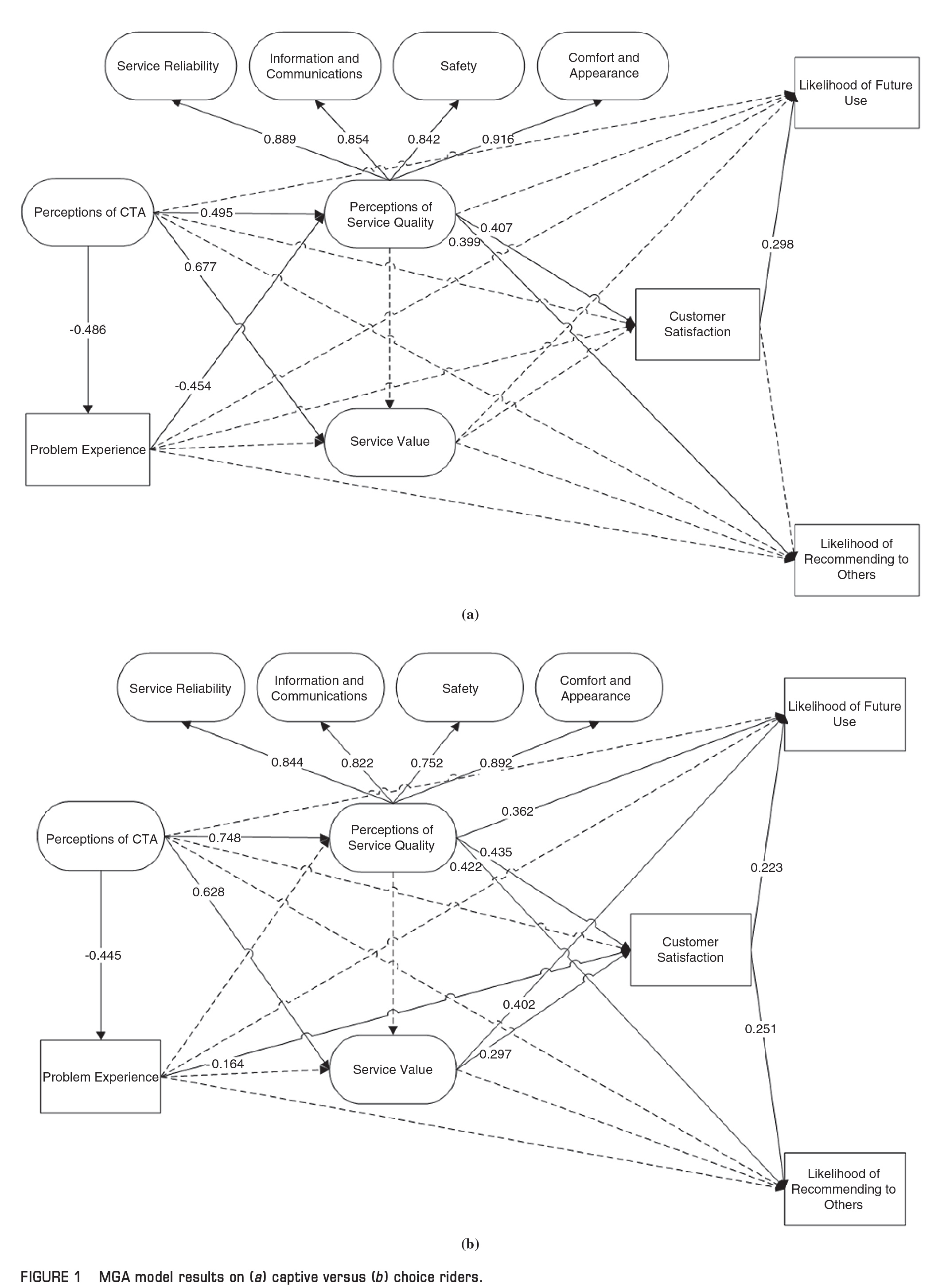| Title | Customer Loyalty Differences Between Captive and Choice Transit Riders |
| Publication Type | Journal Article |
| Year of Publication | 2014 |
| Authors | Jinhua Zhao, Valerie Webb, Punit Shah |
| Journal | Journal of the Transportation Research Board |
| Volume | 2415 |
| Pagination | 80–88 |
| ISSN | 0361-1981 |
| Abstract | Traditionally, efforts to increase the customer base of public transportation agencies have focused primarily on attracting first-time users. Customer retention, however, has many benefits not often realized. Loyal customers provide recommendations to others, increase and diversify their use of the service, and do not require acquisition costs associated with new customers. An earlier study identified key drivers of customer loyalty, with the Chicago Transit Authority (CTA) in Illinois as a case study. A customer loyalty model was created with service value, service quality, customer satisfaction, problem experience, and perception of CTA as constructs. The present study examined customer loyalty differences of captive and choice riders. Captive riders had no viable travel alternatives and might have continued to use transit even if unhappy with service. Choice riders chose to use transit after they compared travel options and might have switched to an alternative if service degraded. Captive riders reported experiencing more problems and were more sensitive to problems; each additional problem brought significant drops in service quality ratings. Captive riders tolerated problems and continued to use transit but showed discontent through their ratings of service quality. Service value was insignificant in captive riders’ loyalty decisions because cost–benefit analysis defined service value as irrelevant to them. The relationship between perceptions of CTA and of service quality was stronger for choice riders. If they began the service with high opinions of the transit agency, they were much more likely to have high ratings of service quality than were captive riders. |
| URL | http://trrjournalonline.trb.org/doi/abs/10.3141/2415-09 |
| DOI | 10.3141/2415-09 |
image:
